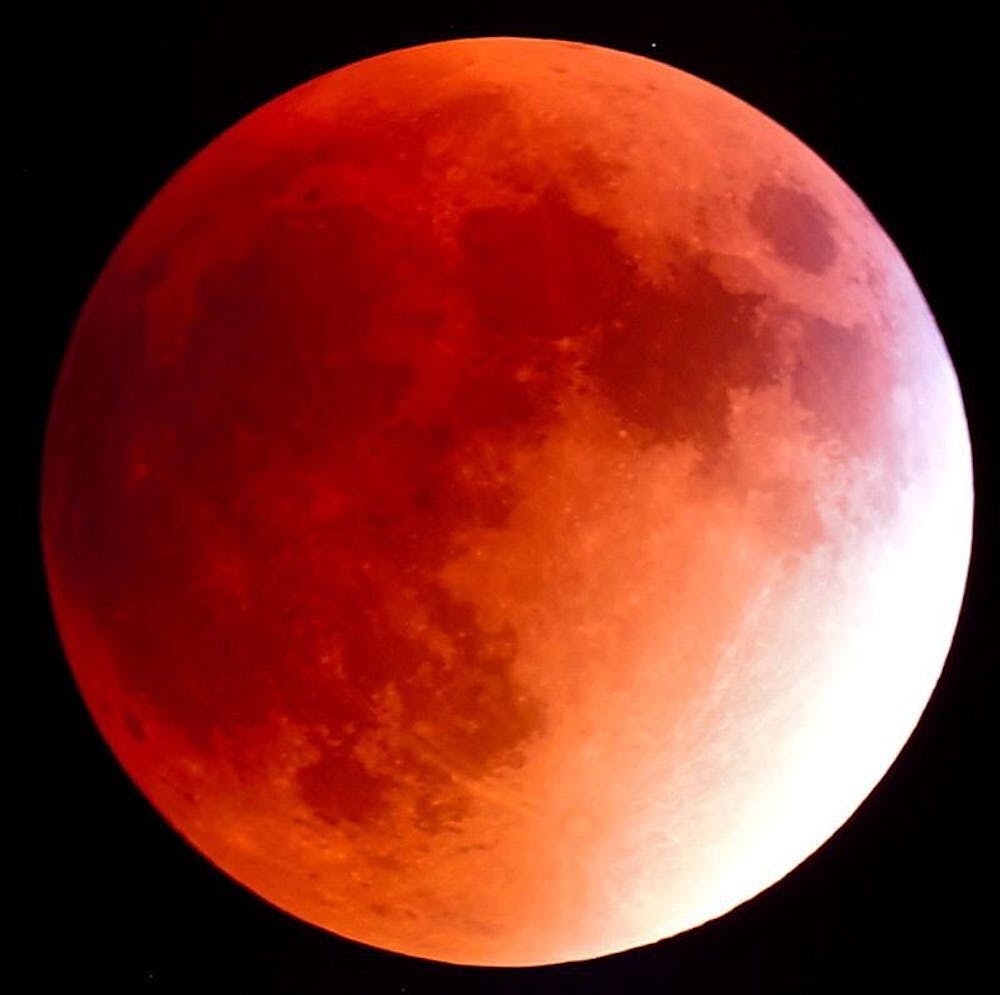By SARI AMIEL Science & Technology Editor
On Sunday night, an eclipse of a supermoon, a rare event that will not reoccur until 2033, was visible in the sky at around 10 p.m. During the eclipse, the moon appeared to have a red glow to it. This phenomena is not uncommon during lunar eclipses and is referred to as a “Blood Moon.”
The moon’s orbit around the Earth is not perfectly circular so at some points of the year the moon is closer to Earth than at others. When the moon reaches its perigee, when it is closest to Earth, it is called a “supermoon.” Supermoons generally appear to be 30 percent brighter and 14 percent larger than typical moons.
The moon generally appears to be somewhat bright because it reflects light from the sun. However, during a full lunar eclipse, the Earth gets caught directly between the moon and the sun and blocks the sun’s light from reflecting off of the moon. A full lunar eclipse can last for longer than an hour, and the supermoon eclipse that took place on Sunday night was approximately an hour and 12 minutes in duration.
Although lunar eclipses typically happen about two times a year and supermoons occur once a year, both events have not occurred simultaneously since 1982. As a result, many people made sure to get outside to witness Sunday’s event.
Sunday’s supermoon was the first full moon to occur after the Northern Hemisphere’s autumnal equinox, and it was the first full moon to take place in the Southern Hemisphere in the spring.
On campus, many students stood on the Beach and along North Charles Street around 10 p.m. on Sunday night looking up at the moon.
“I went into Brody, and I sat in the atrium and then I noticed everyone got up and started walking outside... I got my stuff and went outside and everyone was standing at the back entrance,” junior Allie Diehl said. “I expected the moon to look a little bit bigger and a little more red, but it was still pretty cool.”
In addition to enjoying the eclipse, Diehl appreciated the sense of solidarity that she viewed among the students.
“There were a lot of people on the beach... it was just cool to see so many people outside, on campus, taking a study break. I’d say I felt a sense of community because everybody was willing to walk away from their work from just a little while to enjoy the cool celestial event together.”
The supermoon eclipse was also visible in the rest of North America, South America, Africa and Europe in addition to certain locations in Western Asia and the Pacific. Some locations were able to see a partial lunar eclipse. In areas where the sky was filled with clouds, bystanders were not able to get a view of the eclipse. A number of websites, including the National Aeronautics and Space Administration’s (NASA), provided videos of the event for people who were unable to catch a glimpse of the supermoon.
During an eclipse, the moon often acquires a reddish glow. When Earth’s atmosphere absorbs light from the sun it tends to trap bluer light and reflects light that is redder in color. During a lunar eclipse, this reflected red light can be seen when someone looks at the moon.
“You’re basically seeing all of the sunrises and sunsets across the world, all at once, being reflected off the surface of the moon,” Dr. Sarah Noble, a scientist at NASA, told The New York Times.
Lunar eclipses can cause “supertides,” or higher-than-usual tides. Tides are typically moderated by the gravitational pull of both the sun and the moon, but this is destabilized when the sun and the moon are aligned in the sky.
In light of Sunday’s event, multiple towns in the United Kingdom issued flood warnings, and some of the high tides observed on Tuesday evening were the highest in 18 years.





